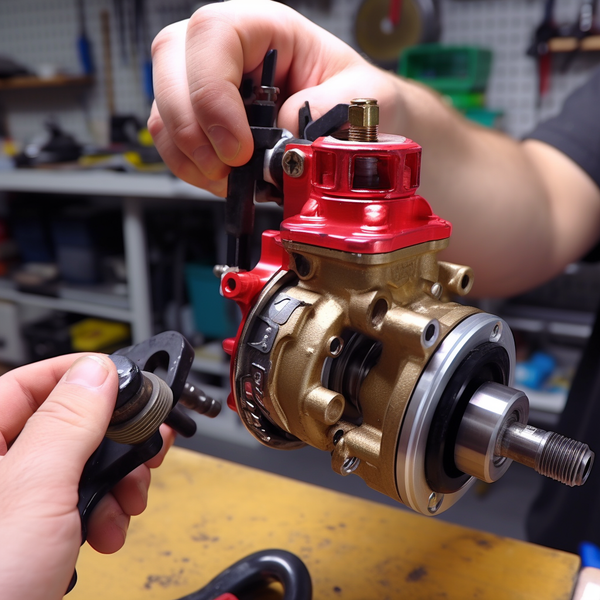The power steering system in your vehicle is an unsung hero, transforming the taxing effort of steering into a breeze. Over time, air can infiltrate the power steering fluid, leading to a spongy or unresponsive steering wheel. This is where the art of bleeding the power steering pump comes into play—removing any trapped air restores harmony to your steering dynamics. Let’s delve into this essential process, ensuring your rides are as smooth as they should be.
Understanding the Power Steering Pump
The power steering pump is a critical component of the steering system, responsible for supplying hydraulic fluid to facilitate easier steering. Most modern vehicles utilize either hydraulic or electronic power steering systems. Each type has its nuances, but the need to bleed air from the hydraulic system remains a commonality. Understanding how your system operates is invaluable for a successful bleed and maintenance routine.
Why Bleed a Power Steering Pump?
If you hear whining noises when turning the wheel or if the wheel feels heavy, it’s often a sign that air is lurking within the system. This can lead to inadequate lubrication, increased wear, and ultimately failure of the power steering pump. Bleeding the system not only enhances responsiveness but also prolongs the lifespan of the system, saving you time and money on future repairs.
Tools and Materials Required
Before embarking on this endeavor, gather the necessary tools and materials. You will need:
- Power steering fluid (consult your owner’s manual for specifications)
- A turkey baster or suction pump
- A clear plastic hose (for directing fluid)
- A container for catching old fluid
- Wrenches (if necessary for your vehicle)
- A helper (optional but recommended for more complex systems)
The Step-By-Step Guide to Bleeding Your Power Steering Pump
Now that you have your tools ready, let’s dive into the meticulous process of bleeding your power steering pump. Follow these steps to ensure the procedure is conducted effectively:
- Prep Your Vehicle: Park your car on a level surface and turn off the ignition. Before doing anything, ensure the steering fluid reservoir cap is easily accessible.
- Check the Fluid Level: Inspect the power steering fluid level. If it appears low, top it off with the appropriate fluid. This ensures there’s enough liquid to facilitate the bleeding process.
- Remove Old Fluid: Using the turkey baster, extract as much old fluid from the reservoir as possible. This prevents contamination and permits a clean flow of new fluid.
- Refill the Reservoir: After emptying the old fluid, refill the reservoir with fresh power steering fluid. This step provides a base for the bleeding process.
- Locate the Bleed Valve: Depending on your vehicle, locate the bleed valve, typically situated on or near the power steering pump. Refer to your vehicle’s service manual if you’re unsure of its location.
- Bleed the System: With a clear hose in place, loosely attach it to the bleed valve and position the open end into your container to catch any expelled fluid. Slowly turn the bleed valve counter-clockwise, allowing air and fluid to escape. You may want to have a helper assist you in this step while turning the steering wheel from full lock to lock. This helps push air out of the system.
- Monitor Fluid Levels: As you bleed the system, continuously check the fluid level in the reservoir. Ensure it does not drop below the required level, or you will need to stop and refill to prevent additional air from entering.
- Close the Valve: Once you see a steady stream of fluid without bubbles, it’s time to close the bleed valve by turning it clockwise securely. This step is crucial as it prevents air and fluid from escaping when you resume normal operation.
- Final Checks: After closing the valve, recheck the fluid level in the reservoir, topping off if necessary. It’s essential to leave some airspace for expansion due to heat while driving.
- Test Drive: Start your vehicle and take it for a short test drive. Evaluate the steering responsiveness and listen for any unusual noises. If all seems well, congratulations, you’ve successfully bled your power steering pump!
Maintenance Tips
To maintain the health of your power steering system, consider establishing a fluid change schedule based on the vehicle manufacturer’s recommendations. Keeping the system clean helps prevent the buildup of moisture and debris that can degrade performance. Regular inspections can catch any issues before they become significant problems, ensuring a longer lifespan for your vehicle’s power steering system.
Common Pitfalls to Avoid
While the process may seem straightforward, several common mistakes can arise during bleeding:
- Overfilling or Underfilling: Always ensure the reservoir is at the appropriate level, as both extremes can lead to complications.
- Neglecting Noise Signs: If you notice a whining sound after bleeding, it may indicate that air remains in the system; repeating the bleed may be necessary.
- Using Incorrect Fluid: Ensure the fluid used matches your vehicle’s specifications. Using the wrong fluid can significantly impact performance.
In summary, bleeding a power steering pump is an essential maintenance procedure that enhances performance and prolongs the system’s lifespan. With a little patience and the proper approach, you can achieve smoother steering and prevent potential issues downstream. Your vehicle will thank you, and you’ll enjoy a far more gratifying driving experience.
